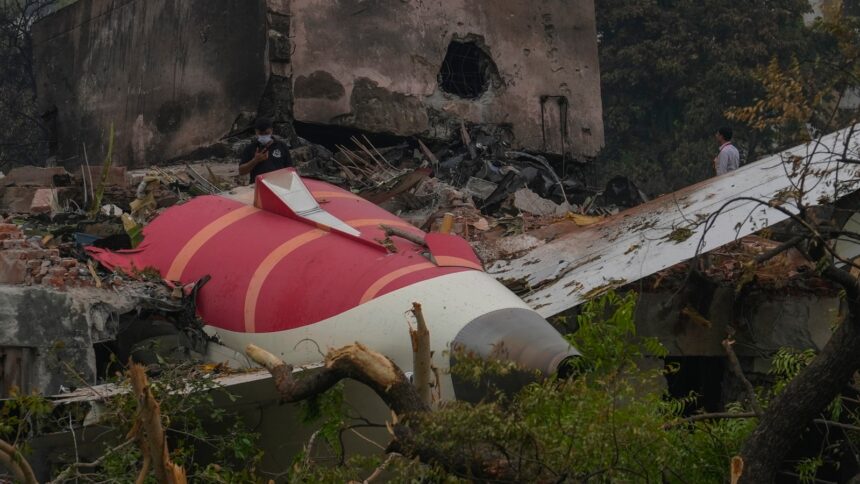The government’s high-level multi-disciplinary committee on Thursday’s crash of Air India flight AI 171 in Ahmedabad held its first meeting on Monday and discussed various possible causes and theories pertaining to the deadly aviation accident, the worst for an Indian airline in four decades. Deliberations were also focussed on identifying areas of improvement and creating a roadmap to formulate standard operating procedures (SOPs) to prevent such disasters. Records pertaining to earlier aviation disasters in India, like the 2010 Mangaluru crash and 2020 Kozhikode accident of Air India Express aircraft, and how they were handled by various stakeholders were also shared in the meeting that lasted around two hours, it is learnt.
The committee is headed by the Home Secretary Govind Mohan and includes senior officials from the civil aviation ministry, home ministry, Gujarat government, the Indian Air Force, and various other departments and agencies including the Intelligence Bureau, Bureau of Civil Aviation Security, and Directorate General of Civil Aviation, among others. It is expected to submit its report within three months.
The technical investigation into the crash of Air India’s Boeing 787-8 aircraft operating flight AI-171 from to London Gatwick is being conducted by the Aircraft Accident Investigation Bureau (AAIB). On being asked why a government committee has been constituted when the AAIB-led probe is already on, Naidu had said on Saturday that the AAIB investigation is technical and specific to the tragic plane crash in Ahmedabad, while the government’s high-level committee will take a more holistic approach and look at further strengthening of the aviation safety ecosystem.
“The Committee will examine the existing Standard Operating Procedures (SOPs) and guidelines issued to prevent and handle such occurrences and suggest comprehensive guidelines for dealing with such instances in the future. The Committee will not be a substitute to other enquiries being conducted by relevant organisations but will focus on formulating SOPs for preventing and handling such occurrences in the future,” the civil aviation ministry had said late Friday while notifying the constitution of the high-level committee.
The objective and scope of the government’s high-level committee also includes ascertaining the root cause of the crash, including assessment of possible contributory factors like mechanical failure, human error, weather conditions, and regulatory compliance-related issues, among others. It is also tasked with assessing the emergency response of various stakeholders—both Central and State governments—including rescue operations, and the coordination between them.
The committee will formulate comprehensive SOPs and suggest the roles of various Central and State government organisations to deal with post-crash incident handling and management. It will also suggest policy changes, operational improvements, and training enhancements required to prevent such accidents in future, and handle the situation in the event of a crash.
Thursday’s crash claimed the lives of 241 of the 242 people on board the Boeing 787-8 aircrfat—bearing registration VT-ANB. Lives were also lost on the ground as the plane crashed into a medical college hostel mess close to the Ahmedabad airport.
As for the technical probe into the accident, the AAIB is being assisted in the probe by the US National Transportation Safety Board (NTSB) given that the aircraft was manufactured by an American company—Boeing—and was made in the US. A UK AAIB team is also going to help with the investigation, and so are Boeing and other major component manufacturers like GE (engine manufacturer). According to aircraft accident investigation protocol, the probe report should be finalised within a year. The world has its eyes set on the probe as scores of Boeing 787 aircraft are operating all over the globe, and this was the first-ever crash involving the 787.
According to flight tracking data, the signal from the aircraft was lost at an altitude of just 625 feet, moments after take-off. It then descended with a vertical speed of 475 feet per minute and crashed. According to aviation safety regulator DGCA, the pilots gave a Mayday call—signalling severe distress—to the Ahmedabad airport air traffic control (ATC) upon take-off, after which it crashed outside the airport perimeter.








